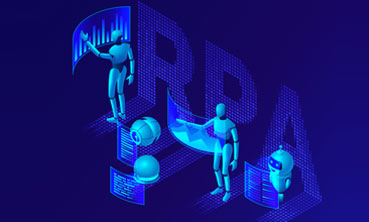
Robotic process automation (RPA) is basically the process that enables a specialized computer program to automate and standardize repeatable activities in business processes, thus freeing up enough time for the workforce while ensuring a standard user experience that may uses various technologies such as artificial intelligence (AI), machine learning (ML).
While RPA is rapidly becoming one of the most prominent features of digital transformation for businesses, around 2,800 customers and 1,600 enterprises have incorporated AI in their daily workflow which has drastically minimized errors while maximizing the speed of operations ensuing drastic reduction of operational costs.
The best part of this technology is that it user-friendly and intuitive even non-technical employees can configure their software robots (bots) for solving the challenges of automation.
Read Also | Benefits of Digital Transformation to Entrepreneurs
Basics of RPA
Robotic process automation (RPA) is automation of activities in business processes, enabling bots to perform repetitive routine work between multiple systems while improvising business operations by filling the automation gap. RPA is used across multiple platforms, mimicking how a person would perform tasks of opening emails and attachments, filling out forms, copying and pasting data, logging in and out of applications.
AI-driven intelligent RPA can be a part of many industries like banks, insurance, government, manufacturing, health care, logistics, and telecom. The dynamic nature of RPA has become the driving force of digital transformation and the future of it.
Benefits of RPA
Being a user-friendly and cost-effective tool, RPA offers a number of benefits across organizations and industries that should never be missed:
- Minimizing Technical Barriers: RPA technology is code-free technology. Having said that, even non-technical staff can automate the program according to the requirements by drag and drop or even record the steps.
- Maximizing Accuracy: Bots are known for minimizing human errors and maximizing efficiency and accuracy with the process of provisioning and de-provisioning accounts of users, copying information across systems and platforms, filling out forms according to the information from another system, and so on.
- Complying by the Regulatory Standards: Bots are configured with the specific information and to perform specific tasks. The controlled nature of the operation helps in meeting regulatory compliance standard specific to each industry.
- Zero Interruption for Work: Using AI and ML, bots work for 24/7. There is no interruption of the break, holiday, inoperative hours for business, and so on. As no staff is needed to perform the task, businesses can get constant efficiency from the bot.
- No Disruption for Underlying Systems: In different industries and organizations, layered integration of applications can be needed. Unlike the initial systems, bots are programmed to store the existing system in place while new information and function have been incorporated.
- Increased Productivity: While using bots, employees within an organization can get off time as RPA will share their workload. As a result, the company can use the human workforce to address more immediate concerns while this system takes care of the tedious tasks that don’t require human intelligence to perform. The focus on strategic implementations and generating revenue will become paramount.
RPA is advancing rapidly. From the basic technology to the current integration of AI and ML, it has come a long way.
Read Also | Digital Transformation is essential for your growth!
The advanced cognitive capabilities and intelligence combined, bots are becoming more efficient to address and leverage unstructured data while interpreting interfaces and offering enhanced user experience as well.
To know more, speak to our expert at Call: +971 4 292 1978 or inbox us your query at inquiry@i-proserv.com

